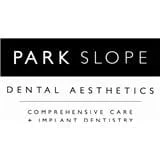
Dentistry that uses the least amount of invasive techniques possible, with an emphasis on providing gentle care
In the field of dental medicine, there is an increasing emphasis on providing patients with experiences that are as relaxing and untroubling as is humanly possible during their procedures. Because of this, the field of dentistry has developed the notion of minimally invasive dentistry, which is a strategy that employs mild treatment approaches in an effort to maintain as much of the patient's native tooth structure as is practicable. Technologies at the vanguard of this revolution include laser dentistry and air abrasion, both of which reduce the amount of discomfort experienced as well as the amount of time needed for recuperation. In this article, we will delve into these ground-breaking technologies and discuss how they are changing the way dentistry is practiced today.
The Movement Towards Less Invasive Dentistry Techniques
Conventional dental operations, such as drilling and extractions, can frequently be invasive and cause patients to experience a great deal of discomfort. However, as dental technology and procedures continue to progress, there has been a movement toward practicing dentistry in a way that is as non-invasive as possible. This patient-friendly approach focuses on the early detection, prevention, and treatment of tooth decay and other dental problems while inflicting minimum trauma to the patient and keeping as much of the patient's natural tooth as possible.
Dentistry Using Lasers Offers Both Accuracy and Comfort
Laser technology is an example of one of the essential technologies that drives minimally invasive dentistry. Dental lasers have a wide range of applications, including but not limited to the removal of dental decay and the recontouring of gums, the bleaching of teeth, and the elimination of bacteria during root canal procedures.
The use of laser dentistry has a number of benefits as compared to more conventional approaches. To begin, it has a great degree of precision, which enables dentists to target only the problematic spots while sparing the tissues that surround them from being treated. Second, it causes less discomfort since the laser beams numb the nerves and reduce the amount of bleeding that occurs. Because of this, patients typically do not require any form of anesthetic for the treatment, which results in a more pleasant experience overall. Last but not least, because of the sterilizing impact of the laser, laser dentistry helps patients heal more quickly and lowers their risk of infection.
An Alternative to Drilling That Requires No Air Abrasion
Another cutting-edge technique that is revolutionizing the way that tooth decay is treated in dental offices is called air abrasion. This gentle decay removal method does not require the use of any drills and instead employs a steady spray of very small particles of aluminum oxide. Compressed air or gas drives the particles toward the tooth surface, thereby "blasting" away the rot on the tooth.
Because the technique permits the accurate removal of disease while simultaneously retaining a greater portion of the healthy tooth, air abrasion is very useful for the treatment of early cavities. Patients who are anxious about the noise and sensation of the dental drill will find the experience to be much more comfortable with this alternative because it is both silent and free of vibrations. However, it is important to keep in mind that air abrasion should not be used for the removal of old fillings or for deep cavities.
The Advantages of Having Minimally Invasive Dental Procedures
Dentistry that uses minimally invasive techniques has many advantages, whether seen from a clinical or patient point of view. It is possible to prevent minor dental difficulties from developing into big problems by placing an emphasis on early detection and intervention, which in turn will reduce the requirement for extensive treatments in the future. When it comes to the patient's experience, minimally invasive procedures result in less pain and anxiety, which ultimately leads to a more satisfying and good dental visit. They also facilitate a quicker recovery, which enables patients to resume their routine activities sooner after treatment.
Looking Ahead: What the Future Holds for Less Invasive Dental Procedures
When we consider the future, it is quite evident that minimally invasive dentistry will continue to exert a significant amount of influence over the dental business. We may anticipate more developments in technology, such as the creation of bioactive materials that can stimulate tooth repair and regeneration. This is just one example of what we can expect to see. In a similar vein, the utilization of digital imaging and CAD/CAM technologies will make it possible to administer treatments that are even more specific and individualized.
To summarize, minimally invasive dentistry represents a fundamental paradigm shift in dental care, one that places an emphasis on the patient's comfort as well as the protection of the tooth's natural structure. Dental operations are becoming less intimidating and more patient-friendly as a result of the development of cutting-edge technology such as laser dentistry and air abrasion, amongst others. As we continue to embrace these innovations, we are not just improving dental treatments; we are also enriching the whole patient experience, making a visit to the dentist a less daunting idea. This is all thanks to the fact that we are improving the overall patient experience. As exciting as it is to be a part of this transition, the future of dentistry will be one that is gentle and uses the least amount of intrusive procedures possible.
